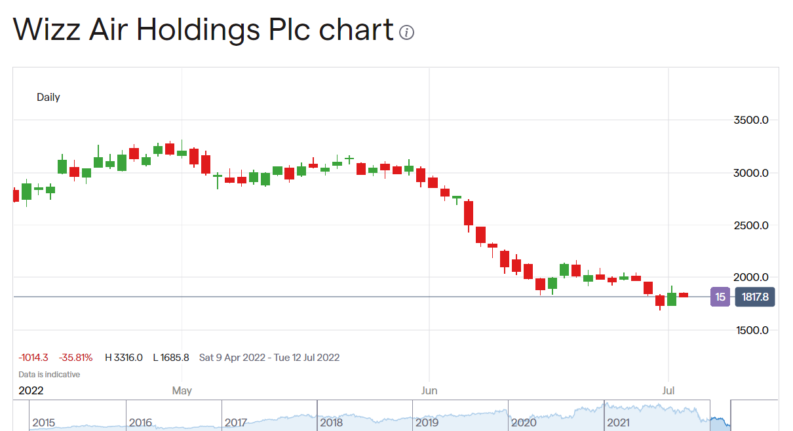Key points:
- Wizz Air reports passenger numbers up 178%
- It's the load factor at 86% that really matters
- The implication is that Easyjet and IAG could benefit, but will they?
Wizz Air (LON: WIZZ) shares are down 2% this morning on the release of their June traffic numbers. The big issue here is what this means for the other airlines, Easyjet (LON: EZJ) and IAG (LON: IAG), the owners of BA. For while the three airlines serve slightly different markets it's still true that the general level of pasenged traffic affects each of them in much the same way.
We must not get ahead of ourselves, it's not true that this general level of traffic is the only thing that matters. The other half, at least, is how the airlines manage to supply sufficient ‘planes and flights to meet that demand. It's the combination of the two that leads to the profit.
It's also true that the UK is having slightly more problems in reopening to airline traffic than many European destinations. Which means that Wizz Air's slight difference in geographical market served could be an advantage here. Easyjet and IAG might well be having more problems with Heathrow and Gatwick, with flight cancellations.

Also Read: How To Buy British Airways Shares
The actual numbers Wizz Air reported are: “In June 2022, Wizz Air carried 4,340,115 passengers, representing a 179% increase compared to June 2021, at a load factor of 86.1%.”
This then answers two major questions. The first is whether we were all going to flood back to travelling as soon as we could after lockdown. The answer there seems to be yes, we did. This implies a good summer for all three airlines, Wizz, Easyjet and IAG, despite their different route systems and markets.
The second is whether the airlines will be able to match supply to that demand. Here we've only got the evidence that Wizz can – 86% load factor is pretty good. It's also, in turn the major determinant of profit. For running a flight costs about – only about – the same whether it has passengers on it or not. So, the determinant of profit is whether that fixed capacity gets filled. Of course, capacity can be changed by not running a flight at all, which is where the matching comes in. How good an airline is at predicting demand determines how much profit it will make. Does it run enough to meet demand, but also only just enough so that load factors are high?
As we say, we can see that Wizz Air is getting this about right – or at least vastly better than last summer. It is summer that matters here too, most of a European airline's profit is made in the summer peak season.
We therefore gain only half of what we'd like to know about the other airlines, Easyjet and IAG. Potentially at least traffic is well up – that's good for them. But what we don;t know is how well they're matching supply to that rise in demand. But it is that last which is what will determine profit levels over this summer season.




